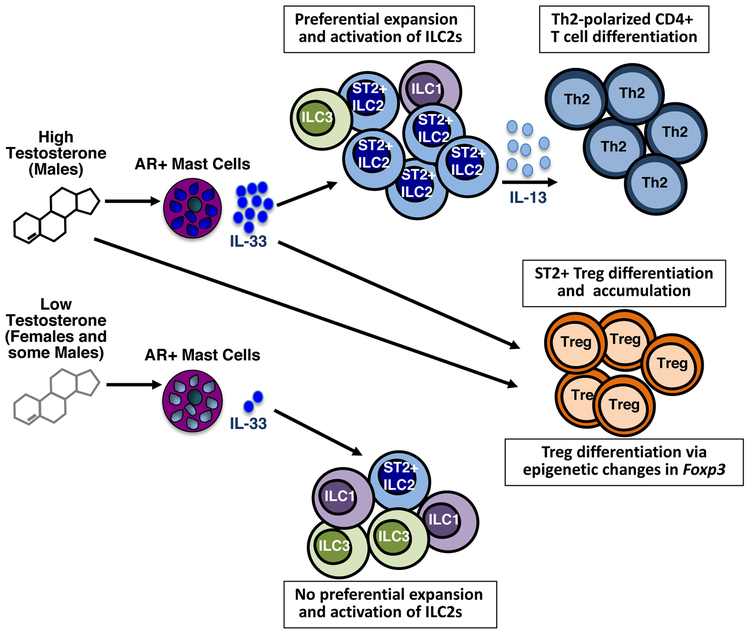Figure 2.
Proposed regulation of peripheral T cell responses by androgens. Under conditions of relatively high testosterone in males, this hormone acts directly to induce IL-33 expression by mast cells. IL-33 activates the preferential expansion of IL-13-producing ILC2s. IL-13 in turn drives Th2 cell differentiation. Normal adult females express testosterone, but at levels 7-8 times lower than adult males. This reduced level is below the threshold to trigger a strong IL-33 response. Exposure to high testosterone during cell development may alter the Il33 locus increasing chromatin accessibility and expression potential in males. Testosterone promotes Treg cell expansion and function: Indirectly, through induction of IL-33, an ST2+ subset of Treg cells undergo differentiation and local accumulation in tissues. Testosterone may also nfluence acquisition of chromatin modifications in the Foxp3 gene that promote increased Foxp3 expression.

